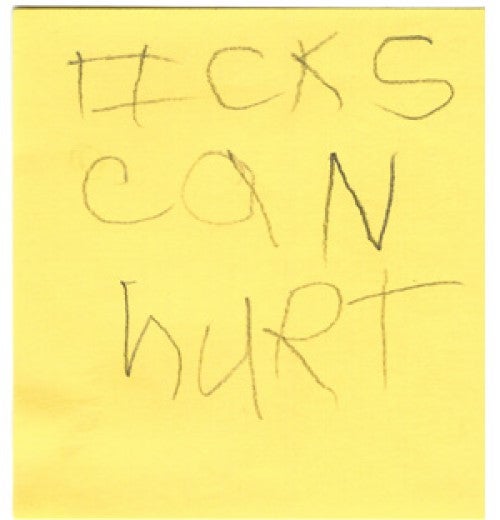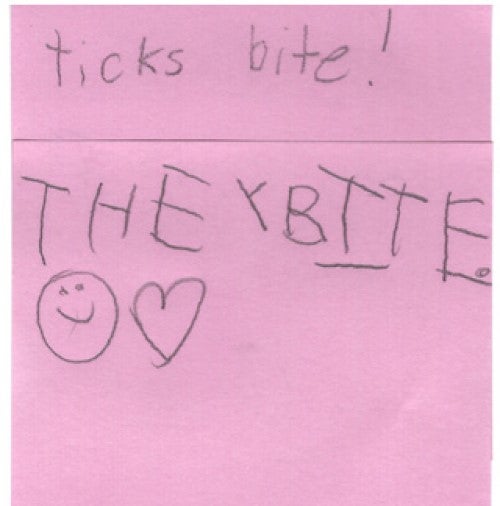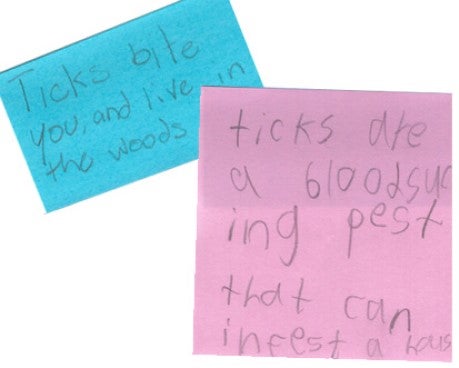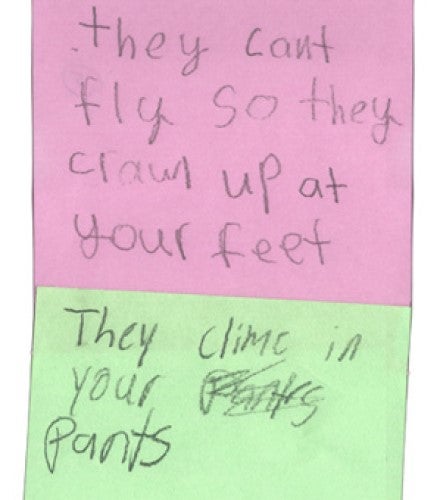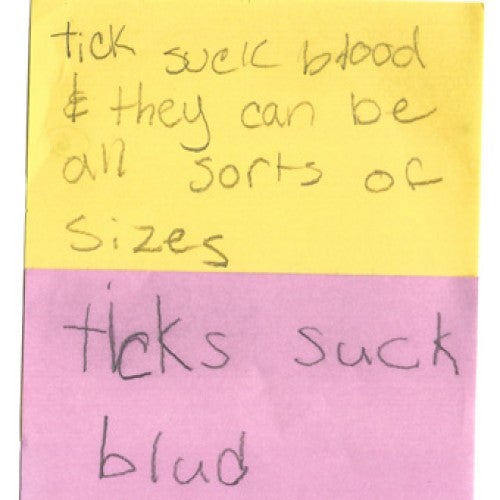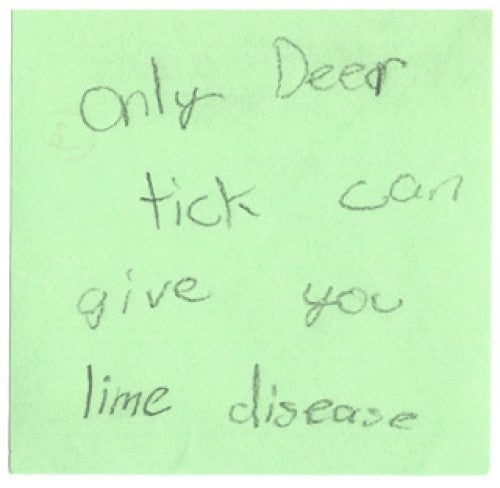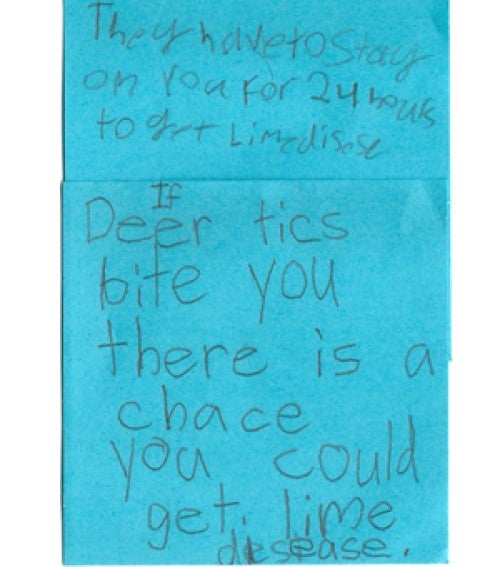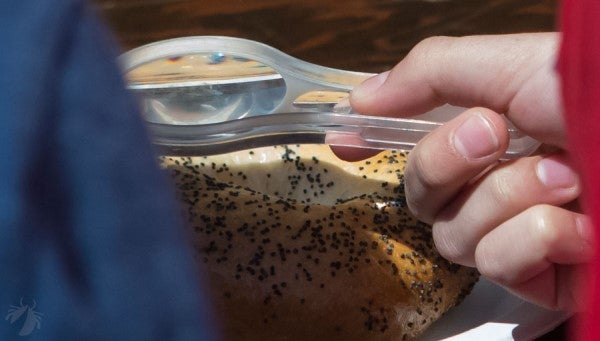 Like me, you may find that you live where ticks do. And if you do, you can either get tick bitten, or you can Get TickSmart! Getting TickSmart means knowing and using “best practice” strategies to prevent tick bites… because the only way to get a tickborne disease is to be bitten by a tick.
Like me, you may find that you live where ticks do. And if you do, you can either get tick bitten, or you can Get TickSmart! Getting TickSmart means knowing and using “best practice” strategies to prevent tick bites… because the only way to get a tickborne disease is to be bitten by a tick.
This spring, we talked with hundreds of kids before starting an interactive Do A Daily TickCheck learning exercise, and asked these kindergarten through 4th graders to tell us “one thing you already know about ticks.”
Almost all knew something! Did you know:
1. “Ticks can hurt”
But did you also know that along with anti-blood clotting chemicals, tick saliva contains potent painkillers, transforming ticks into stealth blood-suckers. Tick removal likely hurts more than their bite.
2. “Ticks bite! They bite”
What can you say… Ticks Bite!
3. “Ticks bite you and live in the woods; ticks are a bloodsucking pest that can infest a house”
Some ticks (like deer ticks) live in the woods, and some (like brown dog ticks) can infest houses. That’s one reason why it’s important to be able to tell different types of ticks apart.
4. “They bite people and anamals; ticks go on pepl”
Ticks mostly feed on wildlife and pets but when tick populations become over-abundant, they can spill-over onto… people.
5. “they cant fly so they crawl up at your feet; they climb in your pants”
Ticks don’t fly, they don’t jump, they don’t fall out of trees! They do latch on and crawl up… and yes, sometimes they climb in your pants, biting “secretly” and “below the belt.”
6. “tick suck blood & they can be all sorts of sizes; ticks suck blood”
Ticks suck blood; that’s how the larvae grow to become nymphs, and how nymphs grow into adults. And it’s that monster blood meal adult female ticks take that gives them all the protein they need to mature their eggs—all 2,000 or more of them!
7. “only deer tick can give you lime disease; if deer tics bite you there is a chace you could get lime disease.”
Different types of ticks carry germs that can cause different diseases; deer ticks and their look-alike cousins living on the west coast of America, and in Europe, Asia, and Russia, are the only type that transmit the bacteria causing Lyme disease.
8. “They have to stay on you for 24 hours to get Lime disese; If Deer tics bite you there is a chace you could get lime disease.”
Many disease-causing germs carried by ticks are not transmitted right away. They have to invade the tick salivary gland first, where they contaminate the saliva that a tick “spits” into its host. The good news is that the delay usually gives you a whole day to find the tick and remove it—and that can prevent a whole lot of disease.
9. “get big rashess”
Tick bites may produce “little” rashes (size of nickel or dime). If a deer tick transmits the Lyme bacteria, that little rash could turn into a whopper. That’s when it’s time to see your primary care provider.
10. “The make you very sick & maybe die”
The germs ticks transmit can cause terrible diseases, and (rarely) in some severe cases, people do die. That’s why it’s so important to prevent tick bites!!
11. “They are very small”
Dog ticks, deer ticks, Lone Star ticks… all types of ticks come in small (larva), medium (nymph) and large (adult) sizes. Larvae are about the size of a grain of salt and have 6 legs. Nymphs the size of a poppy seed on a bagel have 8 legs. Adults the size of a tear drop also have 8 legs.
12. “the smaller the harder to take off”
True, that’s why having a fine-pointed tweezer in your medicine cabinet and first aid kit is important. No need to rush the removal by ripping it off with your fingers; take time to do it safely, and don’t forget to save all ticks you remove from your body so they can be identified, and maybe tested for infection.

